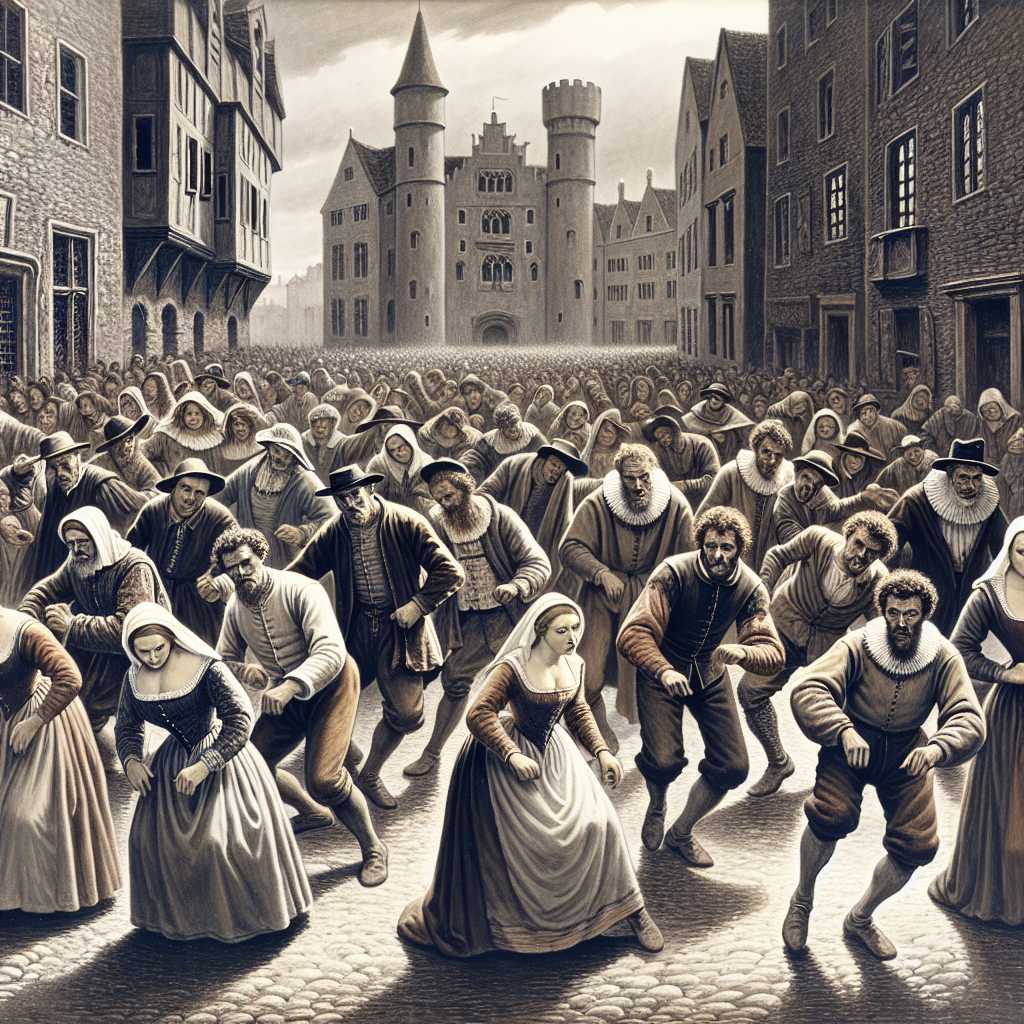In the summer of 1518, the residents of Strasbourg, a city in what is now France, witnessed a bizarre and terrifying event. A woman began dancing in the street — and she couldn’t stop. Within days, dozens of others joined, dancing uncontrollably, many until they collapsed from exhaustion or died.
This strange event, now known as the Dancing Plague of 1518, remains one of history’s most unexplained mass hysteria cases.
What Happened in Strasbourg?
The event began in July 1518, when a woman known as Frau Troffea started dancing wildly in a public street. By the end of the week, over 30 people were dancing nonstop. Within a month, that number swelled to around 400 participants, some of whom died from heart attacks, strokes, or sheer exhaustion.
Local authorities, assuming the dance was a form of spiritual illness or “hot blood,” bizarrely hired musicians to encourage more dancing — hoping it would burn out the affliction. It only made things worse.
🔗 Internal link: Why Do We Crave Sugar When We’re Stressed?
Possible Theories Behind the Dancing Plague
Despite sounding like a legend, this bizarre event is well-documented in historical records, including physician accounts and church archives. Here are the leading theories:
1. Ergot Poisoning
Ergot is a fungus that grows on damp rye and produces effects similar to LSD. Symptoms include hallucinations, spasms, and irrational behavior.
🧪 But critics argue that coordinated dancing for days is too organized for a drug-induced state.
2. Mass Hysteria (Mass Psychogenic Illness)
Under stress from famine, disease, and religious fear, the community may have experienced a collective psychological breakdown.
🧠 This theory is widely accepted by modern historians and psychologists.
3. Religious or Supernatural Beliefs
Many people in the 16th century believed in saints who could inflict or heal curses. St. Vitus was thought to punish sinners with uncontrollable dancing.
💡 Some even called the event “St. Vitus’ Dance.”
Did People Really Die from Dancing?
Historical records from Strasbourg’s council and physicians mention dozens of deaths attributed to constant dancing. The lack of food, water, and rest — combined with summer heat — likely caused fatal exhaustion in many cases.
📘 External link: Smithsonian Magazine – The Dancing Plague of 1518
Why This Story Still Fascinates Us
The dancing plague of 1518 is more than a medieval curiosity — it challenges how we understand psychology, social behavior, and fear-driven responses. It serves as an eerie reminder of how extreme stress and belief can manipulate the human body in mysterious ways.

